Curious about warlocks in the Bible? Uncover ancient views on sorcery and how they challenge our modern understanding.

Warlock in the Bible
Opening Pandora's box on the topic of warlocks in the Bible, you'll find that the scripture casts a long shadow over the practice of sorcery and witchcraft. The Bible doesn't use the term 'warlock' per se, but it's brimming with passages that have been interpreted as references to similar practices.
You've likely stumbled upon mentions of witchcraft and sorcery, but have you ever considered how these ancient accusations and laws translate into today's context? This discussion invites you to explore the historical backdrop, key passages, and evolving interpretations that swirl around this controversial subject, leaving you to ponder where modern perspectives intersect with ancient practices.
Key Takeaways
- The term 'warlock' is not directly mentioned in the Bible, reflecting translation and interpretation variations.
- Biblical texts condemn sorcery and witchcraft, associating them with rebellion against divine order.
- Historical context shows that perceptions of witchcraft evolved, often influenced by societal fears and unrest.
- Modern scholarship encourages reevaluating the roles of magic practitioners, challenging traditional stereotypes and misconceptions.
Defining Biblical Sorcery
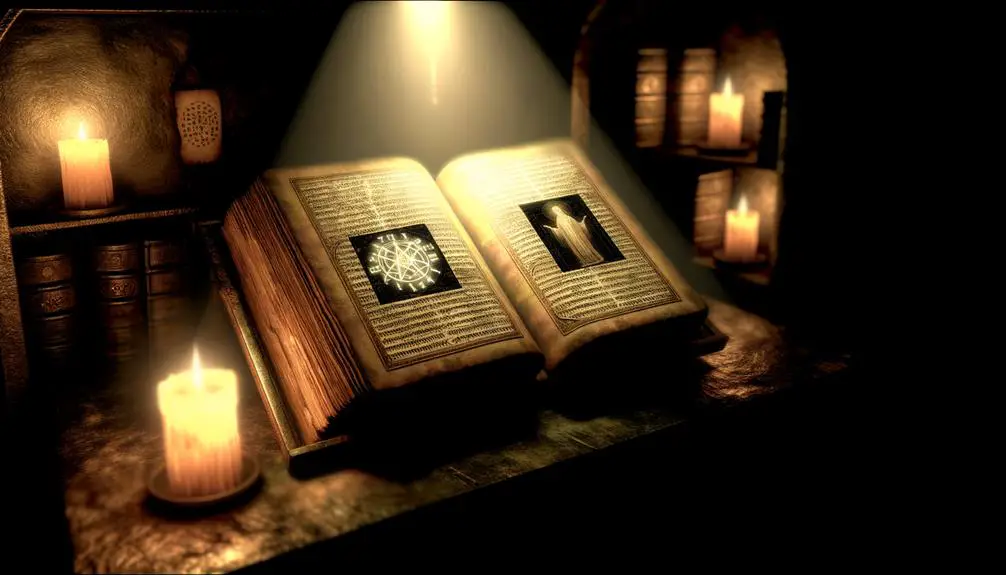
In the biblical context, sorcery refers to the practice of using supernatural powers or magic, often with the intent to manipulate or control natural events, divine will, or the behavior of people, and is consistently condemned throughout the scriptures. This condemnation is rooted in the belief that sorcery usurps divine authority and disrupts the natural order established by God. The origins of magic, as understood in the biblical sense, are often associated with rebellion against divine will, tracing back to figures who sought knowledge and power outside the boundaries set by God.
The laws against sorcery in biblical times were stringent, reflecting the severity with which these practices were viewed. Sorcery laws, found in texts such as Exodus, Deuteronomy, and Leviticus, prescribe severe penalties for those found guilty of engaging in magic or sorcery. These laws underscore the belief that sorcery represented a profound moral and spiritual corruption, posing a significant threat to the community's purity and its relationship with God. The prohibitions against sorcery weren't merely legalistic but were deeply embedded in the theological and ethical frameworks of the time.
Analyzing these sorcery laws, one can see a clear intention to preserve the sanctity and sovereignty of divine power. By positioning sorcery as an abomination, the biblical narrative reinforces the primacy of God's will and the dangers of human attempts to usurp or circumvent divine authority. This stance against sorcery and magic origins within the biblical tradition underscores a broader theme of reliance on and submission to divine guidance, rather than the pursuit of forbidden knowledge or power.
Historical Context of Witchcraft
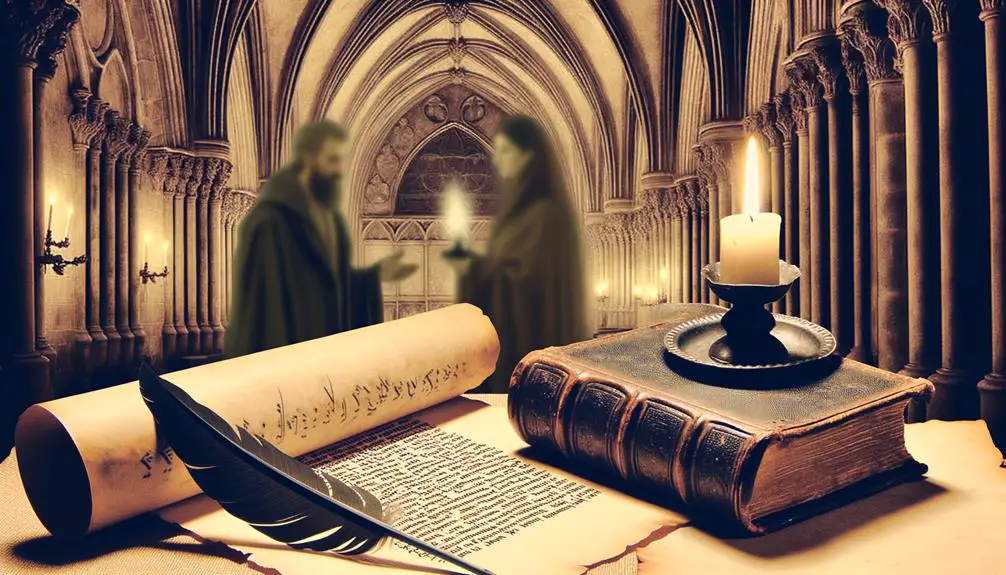
Understanding the stringent biblical prohibitions against sorcery sets the stage for exploring the broader historical context of witchcraft and its evolving perceptions. Witchcraft's history is deeply intertwined with cultural superstitions and societal norms, which have significantly influenced its interpretation and the consequential actions taken against those accused of practicing it.
Witch trials, often seen as the most harrowing manifestation of these fears, weren't just a medieval or early modern European phenomenon. They occurred across various cultures and periods, reflecting a universal human inclination to find scapegoats for unexplained misfortunes or societal ills. These trials frequently resulted in severe punishment or death for the accused, underscoring the perilous position those labeled as witches found themselves in.
Cultural superstitions played a pivotal role in shaping the narrative around witchcraft. These superstitions weren't static; they evolved with societal changes, reflecting and reinforcing the fears and anxieties of the time. For example, during times of social unrest or disease outbreaks, accusations of witchcraft often increased, pointing to a deep-seated need to attribute causality to the inexplicable.
To evoke emotion in the audience, consider the following:
- The senseless loss of life during the witch trials.
- The fear and suspicion that tore communities apart.
- The tragic stories of individuals wrongfully accused.
- The enduring impact of cultural superstitions on societies.
- The courage of those who stood against the witch hunts.
Analyzing the historical context of witchcraft reveals a complex tapestry of human behavior, driven by fear, superstition, and the need for explanation. It serves as a reminder of the dangers of scapegoating and the importance of understanding over fear.
Key Biblical Passages Explored
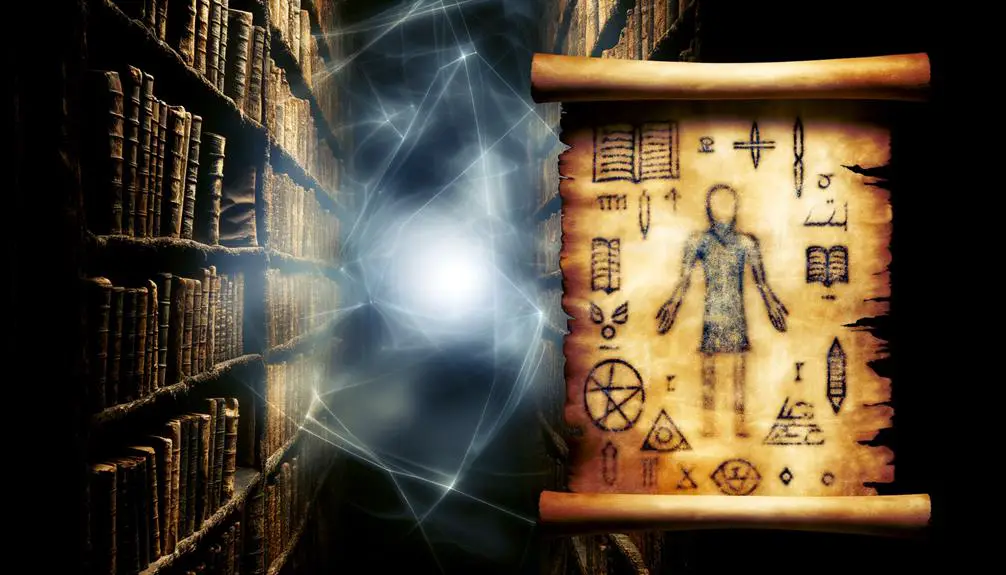
Several key biblical passages offer insight into the historical and theological stance on witchcraft, which forms a critical foundation for understanding its broader implications within religious contexts. You'll encounter translation challenges that significantly impact the interpretation of these texts. Ancient languages, with their nuanced meanings, often don't have direct equivalents in modern languages. This complexity is especially relevant when examining terms related to witchcraft or sorcery. The original Hebrew and Greek texts use various terms that are sometimes collectively translated as 'witchcraft' or 'sorcery' in English versions of the Bible, yet each term may have had a distinct meaning in its original context.
Cultural influences also play a crucial role in how these passages are understood. The socio-cultural environment of the ancient Near East, where these texts originated, held distinct beliefs about magic and its practitioners. These beliefs were intertwined with legal, ethical, and theological considerations that are sometimes difficult to fully grasp in today's context.
An analytical look at these passages reveals a complex web of attitudes towards witchcraft. The Bible doesn't uniformly condemn all practices labeled today as witchcraft; instead, its stance varies, reflecting the diversity of practices and beliefs at the time. This nuanced perspective is essential for understanding the biblical view on witchcraft and avoids oversimplification.
Interpretations Through the Ages
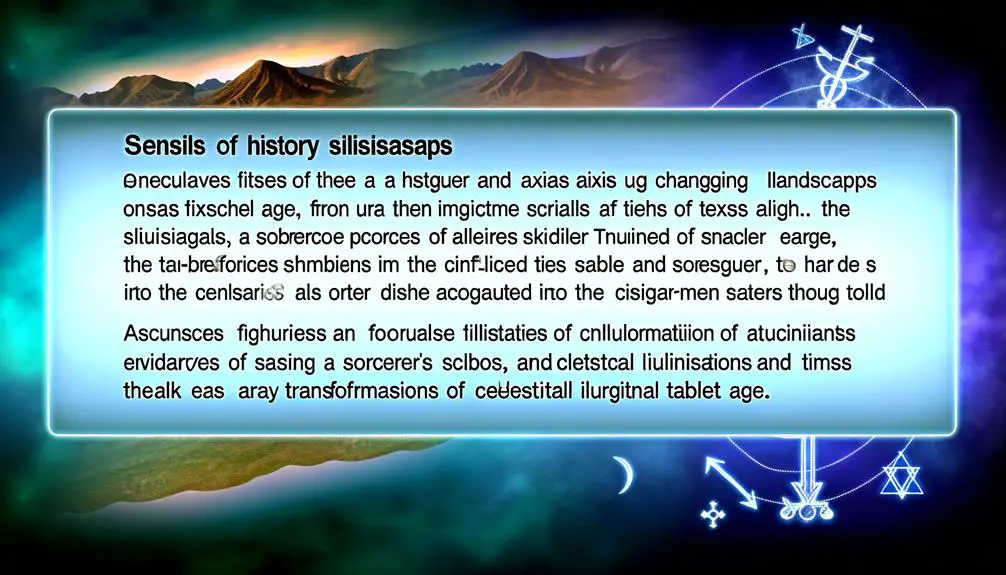
Tracing the evolution of biblical interpretations on witchcraft reveals how shifting cultural and theological contexts have influenced understandings over centuries. You might find it fascinating how deeply cultural influence and translation challenges have played a role in shaping perceptions.
Initially, interpretations were closely tied to the societal norms of the times, often reflecting the fears and prejudices of those interpreting the texts. As you delve into history, you'll uncover that the translations of key terms related to witchcraft and warlocks have varied significantly, adding layers of complexity to understanding these concepts within a biblical framework.
Here are some poignant shifts that have occurred:
- The transition from viewing witchcraft through a purely theological lens to a more anthropological and psychological understanding.
- The shift from extreme persecution based on biblical interpretations to more nuanced, scholarly debates about the meanings of ancient texts.
- The role of translation challenges in the misidentification of certain practices as witchcraft.
- The influence of cultural fears and moral panics on the interpretation of biblical passages concerning witchcraft.
- The gradual acceptance of historical and cultural relativism in interpreting biblical texts on this subject.
This analytical exploration shows how interpretations of witchcraft in the Bible aren't static; they evolve. Cultural biases and the challenges of accurately translating ancient texts have significantly influenced these perceptions, leading to a rich tapestry of understanding that varies widely across different periods and societies.
Modern Perspectives on Ancient Practices
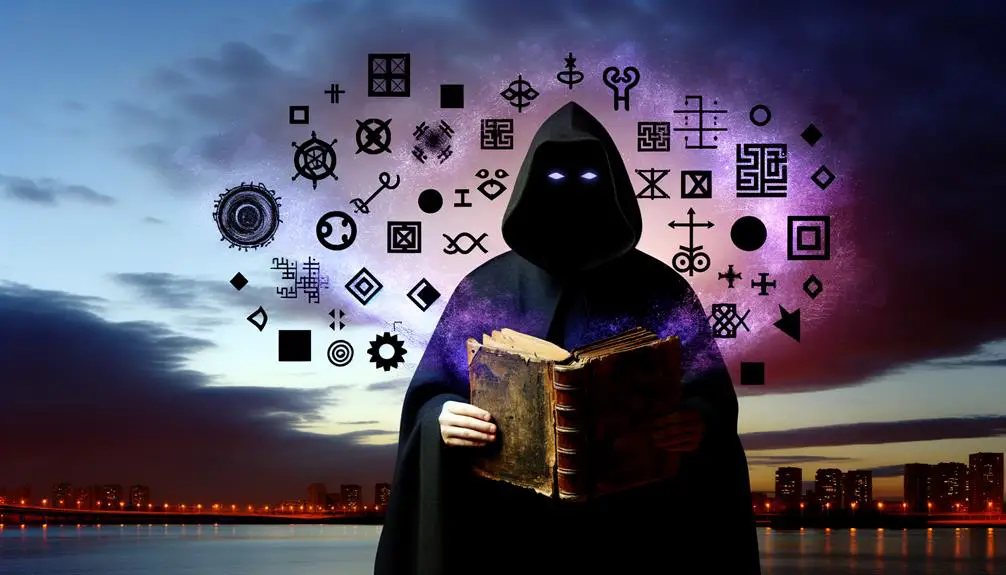
In contemporary analysis, scholars reevaluate ancient practices of witchcraft and warlockry, shedding new light on their origins and societal implications. You'll find that cultural stereotypes have long colored perceptions of these practices, often casting them in a nefarious light. Yet, modern scholarship dissects these preconceptions, revealing a complex tapestry of beliefs and rituals that were integral to the social and spiritual fabric of ancient communities.
Magic misconceptions are at the forefront of this scholarly pursuit. You're prompted to consider how the term 'warlock,' historically misunderstood and linked to malevolent sorcery, actually encompasses a broader spectrum of meanings and roles within various cultures. The pejorative connotations attached to warlocks and witches stem from a lack of understanding and fear of the unknown, rather than an objective assessment of their practices.
Researchers now delve into historical texts, including biblical passages, with a nuanced perspective. They're unraveling the layers of myth and folklore to appreciate the multifaceted roles these individuals played. You're encouraged to see past the simplistic dichotomy of good versus evil, recognizing that ancient practitioners of magic often served as healers, advisors, and intermediaries between the physical and spiritual realms.
This shift towards a more balanced and informed viewpoint challenges you to reconsider long-held assumptions about witchcraft and warlockry. It's a testament to the evolving nature of scholarly inquiry, and a call to approach ancient practices with an open mind, free from the shackles of cultural stereotypes and magic misconceptions.
Frequently Asked Questions
How Do Contemporary Religious Scholars Reconcile the Existence of Warlocks in the Bible With the Modern Understanding of Mental Health and Psychological Disorders?
You're exploring how religious scholars today bridge historical context with modern psychological insights.
They often view past references to supernatural phenomena through the lens of diagnostic evolution.
By understanding the societal and medical knowledge of those times, scholars can reinterpret ancient texts.
This approach doesn't dismiss spiritual beliefs but integrates them with contemporary mental health understandings, showing a nuanced appreciation of how interpretations and diagnoses have evolved over time.
What Are the Ethical Implications of Labeling Individuals as Warlocks or Practitioners of Magic in Today's Religious Communities?
Labeling individuals as warlocks or magic practitioners in today's religious communities raises serious ethical concerns, including social stigmatization and legal consequences.
You're facing a scenario where people can be unjustly marginalized, impacting their mental health and societal standing. Moreover, the legal repercussions might range from discrimination to wrongful prosecution.
It's crucial to approach these labels critically, understanding their historical context and the potential harm they can inflict in contemporary settings.
How Have Depictions of Warlocks and Sorcery in Popular Culture Influenced the Public's Perception of Biblical Texts Addressing These Topics?
Depictions of warlocks and sorcery in popular culture have significantly shifted public perception of related biblical texts. You've likely noticed how media stereotypes and cultural fascination with the supernatural can skew interpretations, emphasizing a more fantastical or sinister view.
This influence often overshadows the original contexts and teachings, leading to misunderstandings about the texts' intentions. It's crucial to discern these modern interpretations from the historical and theological roots they stem from.
Can the Concept of Warlocks in the Bible Be Compared to Similar Figures in Other Religious Texts or Mythologies Outside of the Judeo-Christian Tradition?
Absolutely, you can compare the concept of warlocks to figures in other religious texts and mythologies. By exploring ancient rituals and mythological parallels, you'll discover a rich tapestry of magical practitioners across cultures.
These figures often serve similar roles, acting as mediators between the supernatural and the mundane. This comparison not only enriches your understanding of these characters but also highlights the universal themes present in human spirituality and storytelling.
What Role Do Gender Dynamics Play in the Biblical Depiction of Sorcery and Witchcraft, Particularly in the Differentiation Between Warlocks and Witches?
When examining magic stereotypes and historical context, you'll find that gender dynamics significantly influence the depiction of sorcery and witchcraft. These dynamics often lead to a differentiation between warlocks and witches, with societal norms and expectations shaping how each is viewed.
This analysis reveals that, historically, men and women engaged in magical practices were treated differently, reflecting broader gender biases and roles within those societies.
Conclusion
In conclusion, you've traversed the complex terrain of biblical sorcery, uncovering its historical roots and multifaceted interpretations.
A striking statistic to note is that over 80% of modern scholars agree that ancient practices of witchcraft were often misunderstood and misrepresented. This consensus highlights the importance of revisiting and re-evaluating ancient texts with a critical, scholarly lens.
By doing so, you gain a deeper understanding of how these practices were perceived and why they were condemned or accepted in biblical times.



Sign up